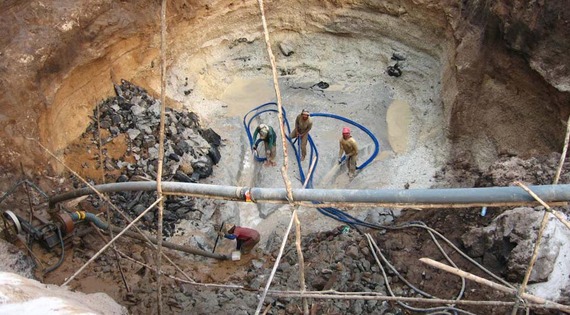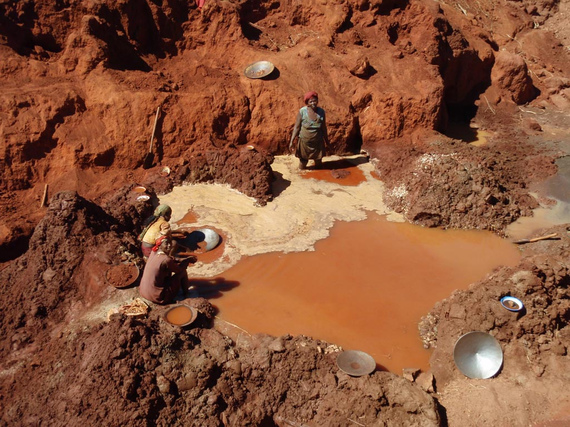Mining for gold in Mali/GEF
I spent many fond moments as a child letting captive mercury droplets swirl from the palm of my hand to another as I waited for my father, a dentist, to finish working on his last patient of the day.
The element that goes by the symbol Hg in the periodic table of elements (from the Greek word hydrargyrum, or "liquid silver") is still widely employed in fillings of dental cavities in the form of an amalgam with a blend of other metals. It has also found a breadth of uses in the modern world including medicine, industrial manufacturing of chlorine, plastics, compact florescent lights and gold production.
It took a major calamity to wake society up to the health hazards brought about by the carefree use and handling of mercury. In 1956, at a remote fishing village of Japan, where a chemical plant was, for decades, dumping loads of mercury into the Minamata bay, the large-scale poisoning of people and animals was bought to the attention of the wider public. Mercury bioaccumulates in the environment through the ingestion of food and water. Over time, the element then concentrates in individual organisms then through the contamination of their immediate environment. Described as the Minamata disease, this form of severe mercury poisoning is a debilitating neurological syndrome caused by the consumption of marine organisms heavily contaminated with mercury.
Because it can be easily vaporized, mercury can be transported through the air over large distances far removed from its original source of emission. With a significant amount of mercury being emitted as a bi-product of industrial processes such as coal burning, along with metal and cement manufacturing, it has now reached even the most remote corners of the planet, making its way into the air we breathe and the food we eat.
Small scale gold mining in Madagascar/GEF
Small-scale gold mining is now the largest source of mercury released into the environment, being responsible for 37% of all global emissions. Mercury readily dissolves gold to form an amalgam, and as such is used for extracting the precious metal from gold bearing ores and sediments. When miners apply heat to the amalgam, mercury vaporizes, leaving behind pure gold. This process is employed daily by hundreds of thousands of small scale miners in developing countries, endangering their lives and polluting rivers and streams.
Because mercury pollution has become such a critical global problem, the Global Environment Facility (GEF) has been providing funding for projects that contribute to reducing emissions since the mid-1990s. But more needs to be done. Building on these and other efforts, the international community has recently agreed to join forces through a new international agreement - the Minamata Convention - aptly named to remind the world that never again must such a disaster be allowed to happen. And recognizing its experience of financially supporting the implementation of other global environmental agreements, the GEF has been chosen as the financial mechanism for the new convention.
Responding to this expanding responsibility, the GEF has significantly increased its support to developing countries by allocating $141 million for mercury-reducing initiatives over the next four years.
Next month the convention's Intergovernmental Negotiating Committee will meet in Bangkok for the first time since the global treaty was agreed in October 2013. As a show of force, 128 countries have signed the convention and seven countries have, to date, become full parties. We expect many more to ratify it soon.
The United States has also made history as the first country to join the convention. This is particularly noteworthy since Minamata is only the second global environmental accord that the country has joined as a party --the Montreal Protocol to Protect the Ozone Layer, signed in the 1980s, being the first. The major emitting countries, including all the BRICS (Brazil, Russia, India, China and South Africa), have also signed the convention, signaling their intentions to support the fulfillment of the agreement's objectives.
Although the Minamata Convention constitutes a significant leap for protecting people and nature against the dangers of mercury, the real work begins now. We have confidence that the November gathering in Bangkok will represent the first great call for concrete global action.


